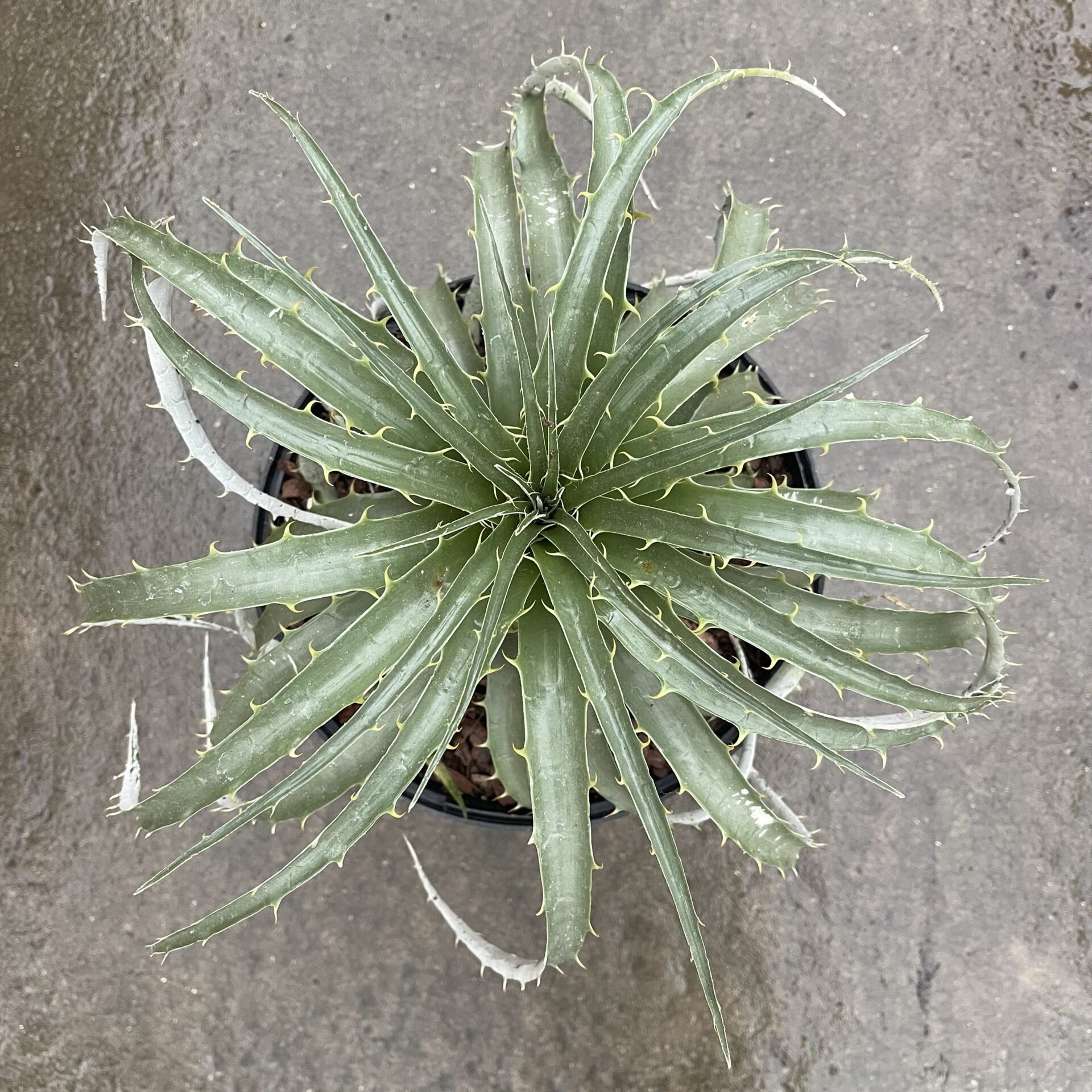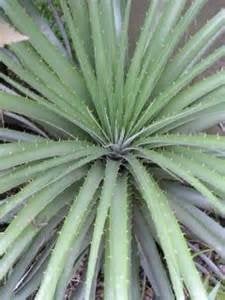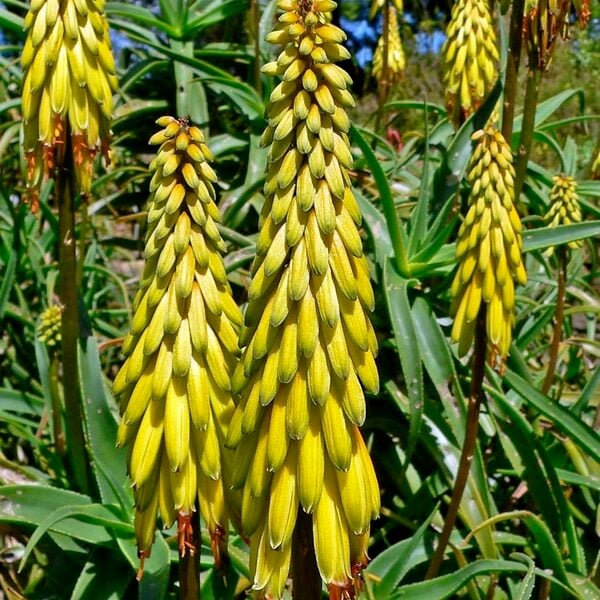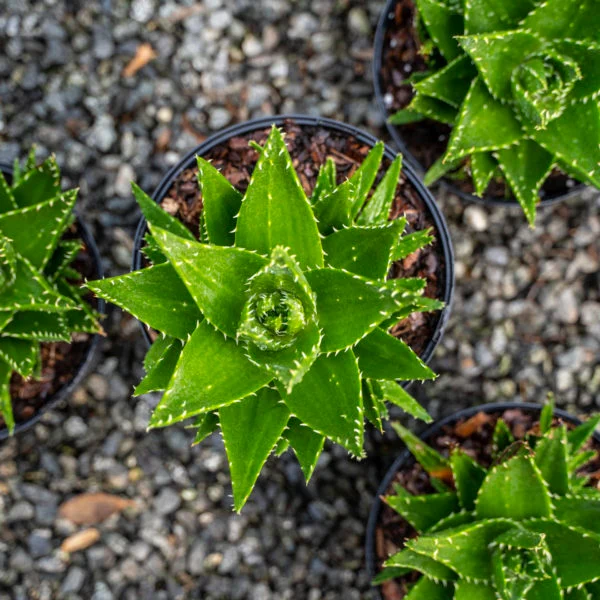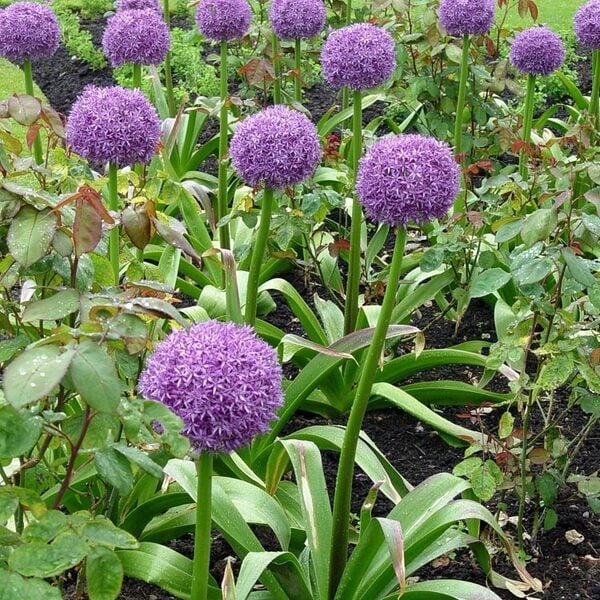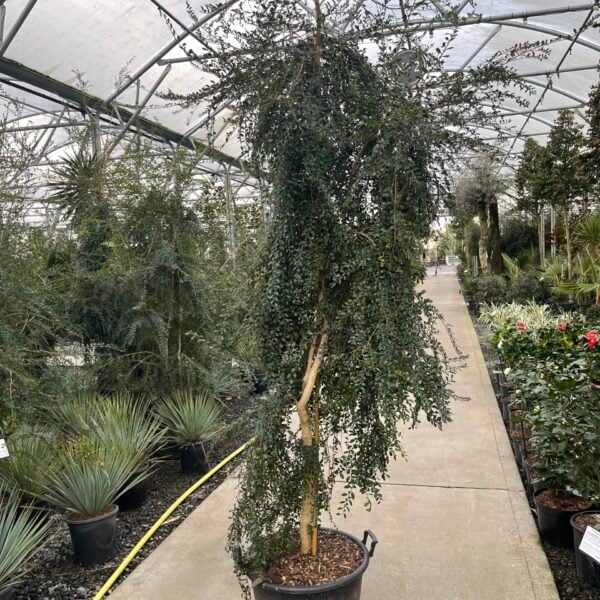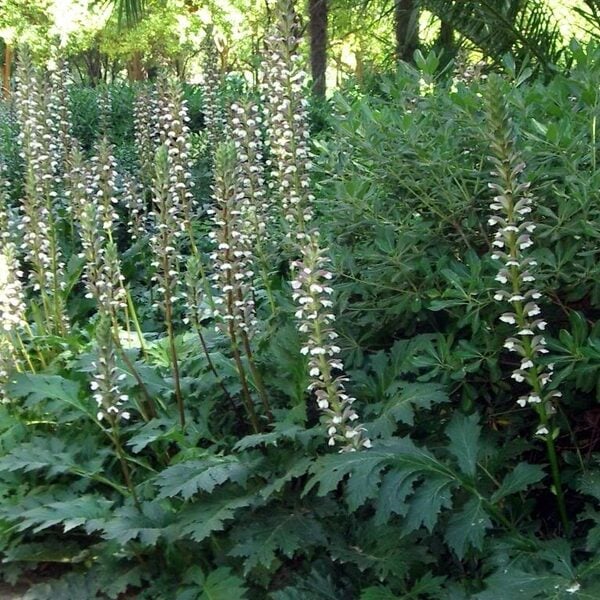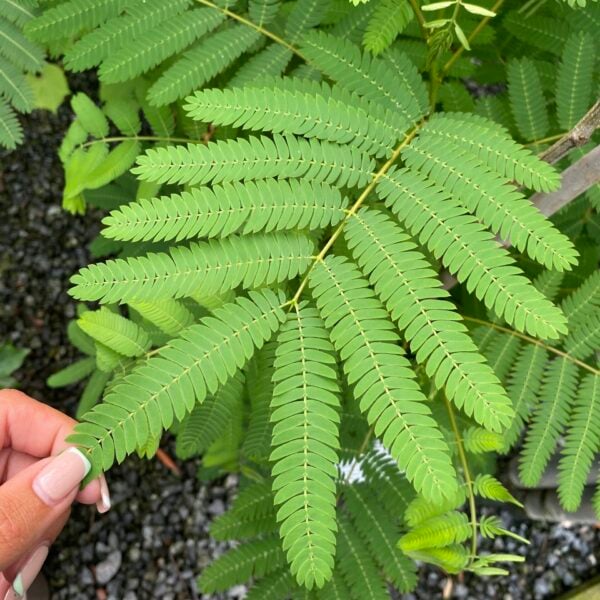Puya alpestris
A pineapple relative from the high Andes. Spiky (very), exotic and hardy in mild gardens. Good in a pot. Please contact us for stock availability and sizes.

Hardiness level Red
These plants are related to both Pineapples and the tropical Bromeliads that grow in trees in Central America. They're terrestrial (they live in the ground not halfway up a tree) but demonstrate their common ancestry with the tree dwellers by living in a pot quite happily for very much longer than most plants. Because they're not terribly hardy, this is convenient. They can be dragged in their pots into a shed for the winter.
The flowers are extraordinary. Metallic blue and copious on great spikes that emerge from time to time - up to 5ft tall.
The plant itself raises spikiness to a whole different level. It's not just the usual spikes at the end of the leaves but barbed spikes on the edges of the leaves too. Stick your hand and forearm into a mature one of these and get used to being firmly attached to a Puya alpestris for the foreseeable future or until being detached by a team of skilled surgeons. The closely related and much bigger and more terrifying species known as Puya raimondii is often fed by the rotting remains of woolly beasts that accidently brushed past them and never escaped their ghastly clutches.
This - relatively restrained - species can grow to 3ft x 3ft with a 5ft flower spike. Full sun and sharp drainage.
Propagated by us from seed.
Additional Information |
|
|---|---|
| Soil Type | |
| Light | |
| Plant Type | Big Leaves / Exotics, Bromeliads, Evergreen, Flowers, Grown by Us, Herbaceous |
| Continent of Origin | |
| Specialist Plants | |
| Features | |
| Situation | Coastal, Conservatories, Mild City Gardens, Plants for Pots, Seaside, Sheltered Garden |
| Flower Colour | |
| Hardiness | |




